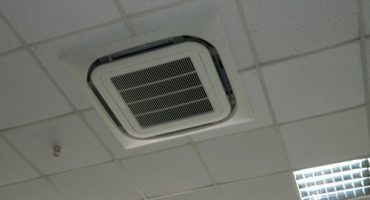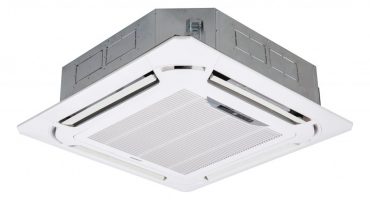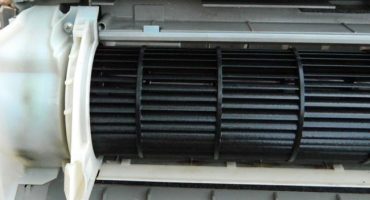Air conditioners provide a comfortable stay not only in the apartment or house, but also in the office, retail premises. Not so long ago, the choice of these devices was small. But every season, manufacturers are in a hurry to please buyers with new models of HVAC equipment. Inverter air conditioners are in special demand. Such species have several advantages. Thanks to the decision to use the inverter in the air conditioner, it turned out to achieve maximum results in the operation of the devices.
What is the difference between a conventional and an inverter air conditioner
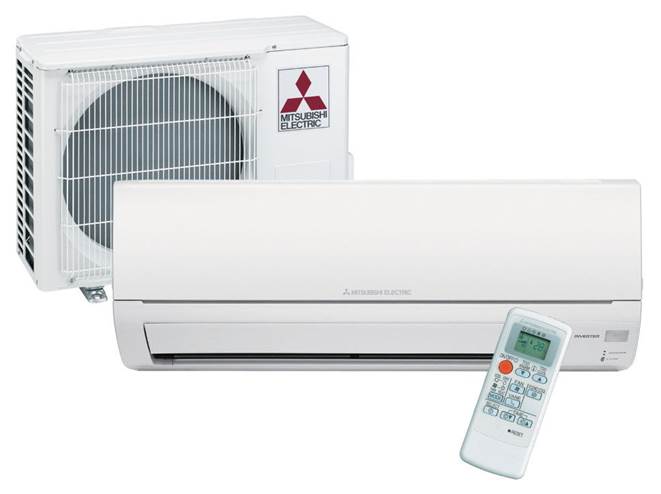
Wall-mounted inverter air conditioner
A conventional (non-inverter) device turns on and off, focusing on the readings of the temperature sensor. A person sets the desired temperature, as soon as the air conditioner cools the air to this level, it turns off. Then the air temperature rises, the sensor reacts to this and the device turns on, and at full power, in order to quickly cool the room.
Non-inverter technology works cyclically, constantly turning on and off. At the same time, at the time of engine acceleration, the device consumes a lot of current. After the start, 50% of the refrigerant begins to circulate, the compressor delivers it from the low pressure zone to the high zone. At this moment, all elements of the device are operating at maximum.
To stabilize the pressure after the compressor is turned off, a throttle system is provided in climate technology. Unfortunately, it does not 100% protect the device from the possibility of boiling freon in any part of the capillary tubes, in the receiver or in the trunk. Most of the cold is aimed at lowering the temperature in the room, but a certain percentage gets out.
Cyclical work with on-off leads to such negative consequences:
- strong wear of all parts of the equipment;
- at start there is a peak load;
- a sharp spasmodic increase in energy consumption.
Important! Inverter air conditioners do not seem to be fundamentally different from conventional climate devices. The type and all characteristics of cooling devices are described in the instructions and the accompanying passport. Some manufacturers facilitate recognition and make notes of INV (INVERTER) on the external module.
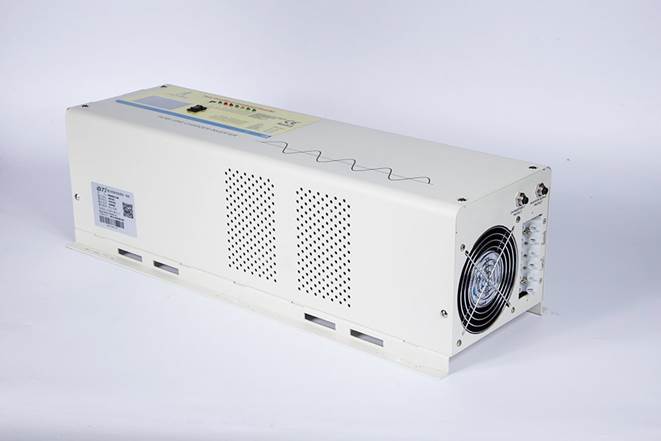
Converter for inverter air conditioner
Inverter technology works on a different principle. In such air conditioners, the control unit provides the conversion of AC to DC. And then the converter again changes the direct current to alternating, but already of the frequency that is needed (set). Inverter power control is the main difference between such devices. The inverter lowers and increases the frequency of the current, due to this, the number of engine revolutions on the compressor changes, which improves its efficiency.
Inverter air conditioning, like the rest, consists of:
- Outdoor unit. It combines such important elements of the device as a compressor, after which a system filter with freon is placed. Next to them is a fan that provides refrigerant cooling, a condenser. In addition to these parts, there is also a control and connection board in the outdoor unit.
- Indoor unit. It combines an evaporator, which cools the air, fan and mechanical parts: shutters, filter insert, condensate drain pan.
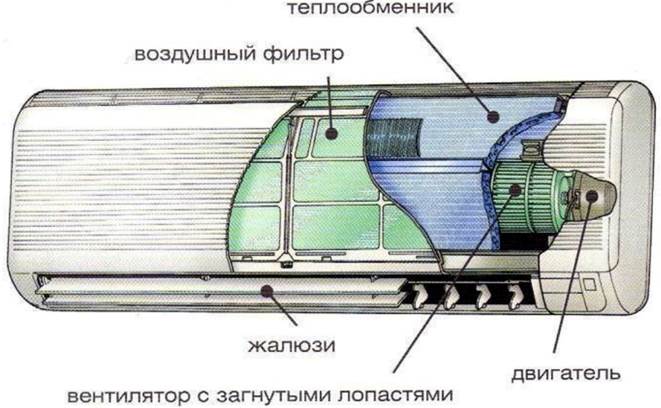
Indoor unit of inverter air conditioner
In an inverter air conditioner, a thermostat is responsible for temperature measurements.The difference in the principle of operation is that when the air temperature reaches the required level, it does not turn off the device, but reduces its power to 5-10% of the nominal. Temperature changes occur more smoothly. As soon as it reaches a certain level, the compressor will again begin to work actively. The range of temperature fluctuations in conventional climate control equipment is 1-5 degrees, and the inverter device operates within 1-1.5 degrees. Therefore, it does not experience heavy loads.
Advantages and disadvantages of the device
The biggest plus of inverter technology in smooth, jerky temperature control in a refrigerated room. Such devices differ in minimal fluctuations, which are no more than 1-3 degrees. Invertor climate control technology makes sure that the air temperature matches the parameters set by the person in the settings. Therefore, staying in the room is as comfortable as possible.
In summer, when it is especially hot, ordinary air conditioners are adjusted so that they provide a temperature inside the building at the level of 18-20 degrees. The indoor unit turns on, actively trying to cool everything around, so the air flows coming out of the air conditioner seem to be “icy”. If a person sits under such a device, he is not just not comfortable, it often leads to a cold. After sudden cooling, the device turns off and “waits” until the air in the room becomes hot again.
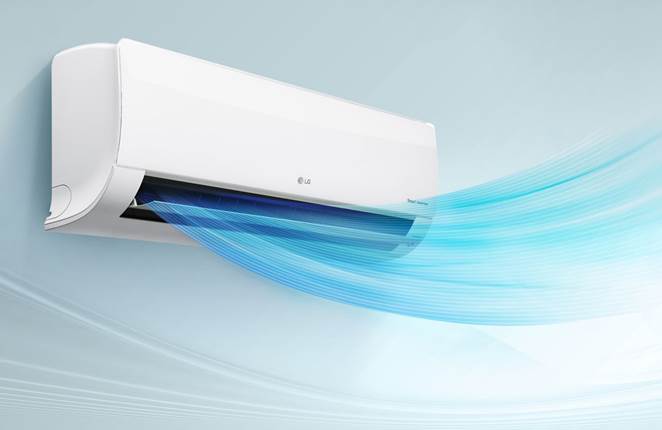
Air supply inverter split system
The air conditioning system of inverter devices does not allow sudden jumps in temperature. Having cooled the air, it continues to work slowly and maintain it at the required level. The air at the outlet of such an air conditioner does not differ much in temperature from the space in the room, so there are no sharp, unpleasant flows.
Benefits:
- Clearly provides the set temperature in the room.
- It works round the clock.
- It is able to provide room heating in severe frosts (-10 ... -20 degrees).
- Rational use of electricity, economical device.
- Reliable, with a long service life.
- Virtually no noise.
Inverter air conditioners still have a number of disadvantages:
- Smooth temperature control is a good solution and a huge plus for most residential premises, especially bedrooms or rooms for babies. But in rooms with increased temperature load, the inverter device will be difficult. In shops, office buildings and places where people often go out, open windows and doors, cooling gently is not the best option.
- Hot rooms like the kitchen are also not suitable for cooling with an inverter. An oven, stove, kettle - all this creates significant temperature differences, the air conditioner will be hard to react.
- Not all parts of the inverter split system are easy to replace, they are not always on sale. And electronic control boards are expensive.
- Given the cost of equipment to buy it for a summer residence, where its inhabitants come only for the summer, it is not advisable from economic calculations.
The main reason why inverter systems are less popular is the price. Split systems of this type have a high cost compared to conventional devices.
Popular device models
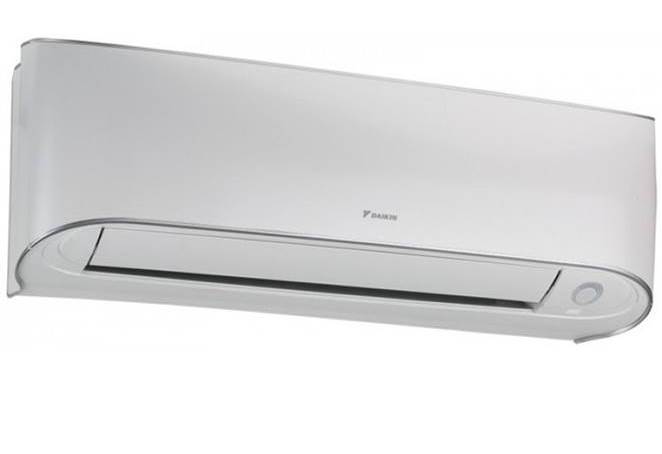
Daikin Inverter Air Conditioner
Many manufacturers produce inverter climate technology. The most reliable air conditioners are considered of such brands: Daikin, Mitsubishi, Toshiba, Panasonic. These brands are working to improve and improve the models of manufactured equipment, increasing their efficiency and reducing noise. Japanese-made air conditioners can vary their performance from 25 to 75%, and the most “running” models from 5 to 95%.
Most popular models:
- Daikin. A distinctive feature of Daikin split systems is their reliability and long service life. This applies to wall and floor models. However, they do not create a lot of noise - no more than 22-27 dB, and the most popular models are even smaller - 19 dB.Most in demand are the FTX and FTXN ranges. All models are economical, equipped with various functions, are able to perform self-diagnostics.
- Mitsubishi Electric. If you consider the price and reliability when choosing, the Mitsubishi Electric air conditioners are clear favorites among HVAC equipment. All of them are tested at least 20 minutes of work, and sample instances are tested in all respects. There are models of Mitsubishi Electric split systems that are able to heat the room when the window is freezing at –20 degrees. Mitsubishi Electric inverter air conditioners consist of two lines - MCZ-GE and MSZ-HJ, which differ slightly from each other.
- Toshiba If we compare air conditioners from Toshiba and similar equipment from Panasonic, Mitsubishi and Daikin, then a more reasonable price for Toshiba immediately catches your eye. At the same time, the split systems of this manufacturer are in no way inferior in quality. The consumer has plenty to choose from, because the various lines of inverter air conditioners have their own characteristics. PKVP has an increased length of the track, and SKVP-ND can work in cold weather outside to –10 degrees. There are standard SKVs.
- Fujitsu. Invertor split systems of this Japanese manufacturer do not require specific maintenance, and at the same time are of high build quality. Low-power models (5-8 kW) designed for residential premises are in great demand. The company "Fujitsu" with the release of split systems equips them with a wide range of functions. The technique can perform self-diagnostics, restart, has a sleep timer, etc.
- Samsung The Korean manufacturer Samsung, unlike Japanese brands, produces products in a more affordable price segment (economy class). Despite the relatively low cost, Samsung inverter air conditioners are a quality technique. The lower price is due to the shorter operational life (7-9 years) and a more modest set of functions.
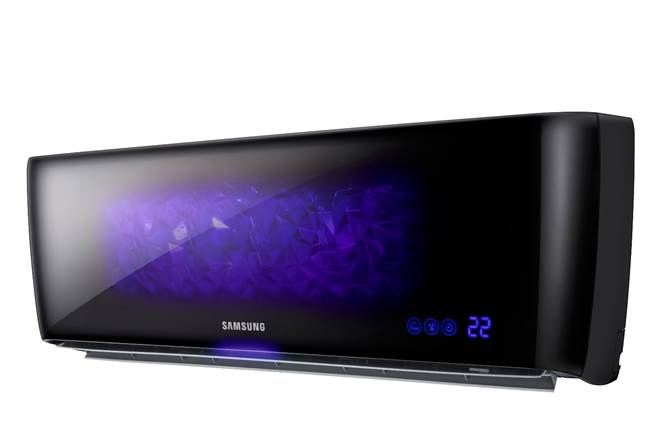
Samsung Inverter Air Conditioner
Inverter air conditioners are a good solution for creating comfort in an apartment. After all, the device works quietly, softly, without creating any discomfort. But this does not mean that you do not need to take care of protecting the apartment from power surges. Also, do not count on a quick payback split system. Despite the high level of energy saving, an air conditioner of any inverter type manufacturer will pay for itself in about 5 years. This is a long time during which any equipment may malfunction or require repair.

